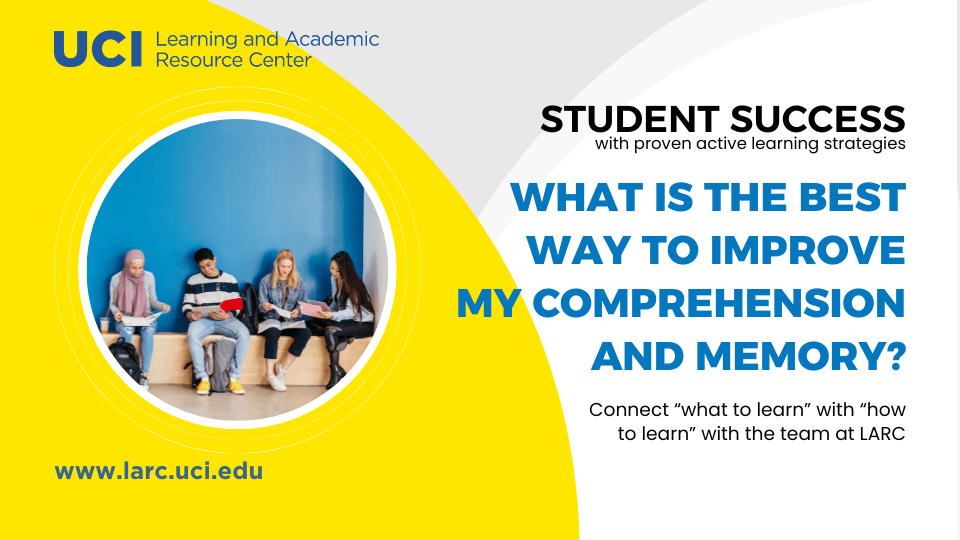Did you know that there’s real science behind how we understand and remember? As a student, tapping into this science can help you study more effectively. To make the information stick, there are steps that you can take before, during, and after class. Here are some of our recommendations for improving your comprehension and memory.
- Spacing: Spread out your studying instead of cramming all at once. Start studying early and pace yourself by setting aside a little bit of time each day. As you move on to studying newer material, consistently revisit older material to keep it fresh in your memory. Check out this helpful video to learn more about spacing.
- Retrieval: When you dedicate time to studying, make sure you’re using a proven strategy. Simply reviewing your notes is not an effective study strategy. Instead, try to use retrieval which requires you to test your knowledge. Use flashcards for memorizing the basics and practice tests for applying the more complex concepts. Try recalling as many “big ideas” from a recent lecture as possible and write or sketch them out before referring to your notes or textbook to check for accuracy. Retrieval may feel harder than re-reading notes, but it helps you avoid illusions of knowing and ensures that the information stays with you longer. Retrieval can also show you what’s truly in your knowledge set and what you might need to focus on moving forward. Check out this video to learn more about retrieval.
- Dual Coding: Dual coding is the process of combining verbal and visual elements to create two formats for memorizing the same material. To get started, look for visuals in your course materials. Do the words used to explain them make sense to you or enhance your understanding? Talk about what you see with a peer. Try to carefully explain what the visuals mean using your own words. If your materials don’t include visuals, draw your own. Create a diagram or make a graphic organizer. Add some color, real-world examples, and humor to make the visuals more appealing (no art skills required). Consider what would happen if you made a copy of a diagram without its labels and wrote them in from memory (for example, a diagram of a cell). You can use these tools to review and even try to redraw them from memory to better “encode” the information in your mind. For more on dual coding, check out this resource.
- Social Learning: We learn better together. This includes learning through conversations or structured study with expert instructors and with the guidance of knowledgeable peers. We may also remember more effectively when we tackle problem-solving out loud and learn from mistakes. Plus, it’s fun to belong to a learning community. These are great reasons to create or join a study group, attend office hours, and participate in peer-led review sessions. Reach out and connect! Post your study group announcement on your class message board to get your classmates involved. You can also check course department websites for peer-to-peer resources or contact LARC for more information about small-group tutorials.
For more of the science and how to apply it, turn to the team at LARC! Meet with one of our academic coaches one-on-one, sign up for a LARC tutorial, or check out our best learning tips. For more study strategies, check out some of the other resources The Learning Scientists have to offer.
Please don’t hesitate to contact us for additional information.

